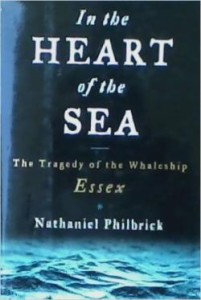Christmas is always a time of mixed emotions. There is great happiness in watching kids’ excitement about Santa, spending time with family and friends, eating great food and renewing your faith. But there is also great sadness in remembering those gone from your life, past joys that can never happen again and the ending of another year of your life.
Those of us that love the outdoors and spend time in nature seem more attuned to the cycle of life since we see it first-hand so vividly. In 1985 I built a simple deer stand between two sweetgum trees. Hunting that stand season after season, year after year, the changes in the woods really comes home.
One very noticeable fact is that tree trunks grow out, not up. The spikes driven so laboriously in to the tree as steps are still spaced the same distance apart but the spikes that once stuck out two inches further than your boots’ width are now barely wide enough to get a good foothold.
And although the steps are the same distance apart, thirty years later it is a struggle to raise your foot from one to the other where 30 years ago it was an effortless climb. And there is a soreness in your arms and legs after a hunt that was not there even a few years ago.
The woods themselves go through changes both natural and man-made. I picked the site for the stand because it was on an edge where big pines with a good bit of undergrowth changed to more open hardwoods. Over the first ten years the undergrowth thinned in the pines as they got bigger and provided more shade.
Then the pines were thinned for lumber, opening up the ground to more sunlight. Brush and vines grew and got so thick that it was hard to walk through it. But the deer loved it and I saw more deer for about five years after that than I had before the thinning.
Another man-made change was an accident. I hunted with a lever action Marlin 30-30 with a scope mounted on see through rings. Those rings allowed me to use the iron sights if needed, but raised the scope very high.
One morning a doe moved into the open about 50 yards down a shooting lane I had cut. I eased up my rifle, put the crosshairs on her chest and pulled the trigger. She jumped about ten feet to her left then stood there looking around, wondering what had happened.
Fortunately, I had immediately ejected the spent shell and loaded a live one while the gunshot still made it difficult to locate the source of that sound. While she looked around I aimed and pulled the trigger again, and this time she dropped. I could not figure out how I missed such an easy shot the first time.
The next trip I found out why. While standing in the same position and looking at the spot she was standing, I noticed a three-inch-thick limb on the adjacent water oak was splintered. It was about four feet from where the end of my gun barrel had been when I shot.
You learn as you age, too. Looking at that limb I realized my scope was so high I could not see the limb in it even though the crosshairs were on the deer. My bullet leaving the barrel hit the limb as it rose to intersect with the point of aim of the crosshairs zeroed in at 100 yards.
I watched that limb die and fall over the next two seasons. I didn’t know you could kill a limb with a 30-30 but I did. When it fell I got it and it is still in my garage, bullet hole and all!
For a couple of years a ground squirrel had a hole at the base of a nearby tree. I enjoyed watching it scurry around finding food and watching out for danger. But it drove me crazy when hawk flew over and it would sit in the mouth of its home whistling a warning. Cute for a few minutes, the sound got very irritating after several minutes of it.
That cute little animal emphasized the shortness of life. It was gone the third year and I found their life span is only two to three years even if not eaten by a hawk. Our life spans are about 30 times that long, and we don’t have to be wary of hawks, but even that amount of time does not seem to be enough, especially for those you miss so much this time of year.
A pile of rocks on a small ridge near my stand made me dream of the past. The small ridge is an old field terrace.
At first I thought of some rich farmer making his slaves clear the land, build terraces for flat ground to plant cotton, and move rocks out of the way and pile them. Then I realized this hillside was not prime land that a rich farmer would own. Rather, it was most likely a family farm with the father, wife and children laboring to make terraces to scratch out a living from less than ideal land.
Those rocks tell a story of their own. They sat in one place for hundreds of years, then were move to their current location where they will sit for hundreds more. Eventually they will be worn down into sand by rain and lichens growing on them. Although they last much longer than we do, they, too, will some day be gone.
Life changes. It is too short to worry about the things that don’t matter. Instead, spend time with those you care about and make happy memories for future Christmases.



